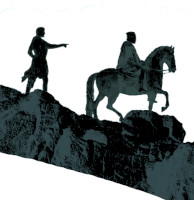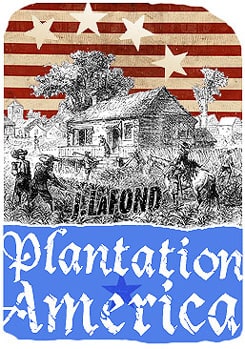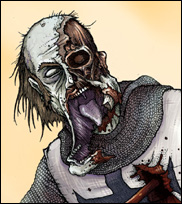pages 1-27
The 27page introduction to Samuel Wiseman’s book of record is the best general history of Bacon’s Rebellion and does not fail to set the stage, with Oberg hitting all the key historical points—for English Virginia was then 60 years old. That was three generations of planters but 11 generations of their Christian slaves. Alone among the historians I have consulted in this crucial act in Pre-American history, Oberg points out that revolution had only just become feasible. Having taken all of the land except for a handful of subject Indian enclaves, conditions on plantations were now no longer a 95% death sentence in the first 5 years. Much is made of the 7 year standard term for so-called indentured servants. But one should keep in mind that it was well known by their masters that the human property they bought on board ships anchoring at Jamestown would not survive 5 years, let alone 7.
How much of this was the result of deliberately wearing out one’s chattel and how much stemmed from the fact that land clearance was more deadly than later fieldwork harvesting crops and that Virginia was an experiment and that enemy Indians remained a threat through 1644, is not knowable. Rationally, we should expect that all of these four factors played a role in suppressing free English populations in Virginia to the point that in 1671 not 100 freedmen could be found to settle Carolina.
However, between the defeat of the Powhatans in 1646 and the passage of a law in 1670 forbidding freedmen from voting, at least a handful of servants had managed to survive the system, a system that was not designed for them to survive. A new breed of embittered slave was being released into the political bloodstream of plantation Virginia. What was the oligarchy to do with them?
Ironically, the answer was to arm them and use them as militia to check raids from enemy Indians and possible landings by Dutch, French or Spanish foes, as domesticated subject Indians had been reduced in numbers and efficacy to the point where they were no longer potent allies. This resulted in a slowly growing class of homeless, armed man who would gravitate towards the younger and more dynamic oligarchs. By 1675 there were now at least a thousand such men were there had not been 100 in 1670. This was a huge demographic shift, effectively tripling the numbers of available combatants for any potential civil war over the previous 5 years.
From a population of 25,000 in 1660, Virginia in 1675 had a population of 46,000, including an increasing number of homeless vagabonds, criminal rogues and runaways [all subject to re-enslavement under the existing statutes] and presumably enough of the 100 freedmen who remember having their right to vote taken away from them five years earlier to provide a class consciousness aware of their defrauded status. Indeed, the first law forced upon the Governor when Bacon and his men took Jamestown was giving the vote to this armed cadre of unpropertied men.
It turns out that the very existence of a body of armed men without a property to tie them down operationally placed a social weapon in play, a weapon that would be reached for by some opportunistic planter as soon as the fragile and unnatural balance between the tobacco economy of Virginia and the greater world of the Eastern Woodlands came into conflict.
There was a sense that internally, domesticated Indians were now no longer a military threat but consisted of an alien underclass:
“…the poor Indians whome the seating of the English hath forced from their wonted conveniences.”
Vigilante justice against such captive Indians was outlawed, which caused much bitterness among newly arrived English who had great difficulty telling one tribe from another and when attacked by enemy Indians might take vengeance on friendlies. One might state that this racial instinct, when possessed by people without an intimate knowledge of other races living in close proximity is the chief cause of racial strife in mixed race societies.
There was too a realization that beyond the borders of Plantation Virginia lurked a threat capable of exterminating the English. So, while guns that had once been eagerly bartered to Indians in return for alliance, their sale was no outlawed. A law even designated that that “frontier plantations” must include at least “fowre able hands well armed.”
What this single statute reflected was that for every plantation within a day’s walk of the falls of the various headwaters, before the rivers calmed to lazy drainages on the coastal plain, there would be at least four militia men charged with putting their life on the line for room and board, without a say in the election of political officers, let alone a say in the policies such men enacted. Such men, “lately crept out of servitude,” untrained, inexperienced, stunted from childhood starvation and labor, were charged with defending their masters against the most effective and most feared warriors of the known world.
Furthermore, after the Dutch fleet sunk tobacco ships in the Chesapeake in 1763, the Crown had demanded of its governors that forts be built on the sea coast and also inland. The forts on the coast did nothing to defend the frontier and the forts inland also did nothing to defend the frontier from raids and slaughter. Frontier forts would only later become useful as a means of projecting power into the hinterland and had no functional defensive purpose against Indian war bands.
And who was called upon to pay for these monoliths to stupidity?
The younger, and newer plantation owners on the frontier, who knew little of the wild Indians save that they were both invisible and invincible, and nothing of the domesticated Indians save that they were protected by the very government that taxed them and failed to protect them from the wild Indians.
In the end the causes for what has been erroneously called Bacon’s Rebellion might be summed up best by Osberg:
“…this assembly worked with the governor to exclude the heavily taxed former servants from power…Forts that brought no security; a closed provincial elite headed, in the eyes of aspiring planters, by a corrupt and avaricious governor intent upon engrossing the wealth of men of moderate and limited means; a political system unresponsive to local needs; a general constriction of opportunity…”
With the above burdens laid upon men standing guard over a tobacco field against an unseen menace lurking within the towering primeval forest that sprouted like a wall at the edge of his master’s property, an enemy a head taller, twice as strong, born and bred to hunt men, an enemy who travelled further in a day than most of the folk on this plantation would travel in their short life, who was he to turn on with his weapons after 100 Susquehannocks defeated a force of 1,000 Virginia and Maryland militia which had waged war without just cause and committed murders at a parlay which were according to the English “Diametricall to the Law of Arms” crossed the Potomac in search of vengeance, “killing who they found” [mostly servants and hands well-armed] and “…they Slew Mr. Bacon’s Overseer whom He much Loved, and one of his Servants, whose Blood Hee Vowed to Revenge if possible.”
Alone among the historians addressing this seminal event in pre-American history, Osberg not only grasps the plantation system for what it was, but takes the English for their word. It was a time largely before the lie, when those interviewed admitted misdeeds and faults and took oaths seriously, and in Osberg’s hands we can trust that their voices have not been silenced, muddied or patronizingly treated like the addled pleas of long-dead children as most establishment historians seem all to comfortable with.
The English of Plantation Virginia told their own stories to Samuel Wiseman, stories in which they openly admitted to alternately acting the scoundrel, the fool, the coward and the brute, in conflict with a people who were all but untouchable, militarily, by any means other than betrayal and murder. Yet the accepted narrative histories online and between book covers, of Bacon’s Rebellion, treat the shivering, malnourished, fumbling servant or freedman with his matchlock as if he were George Armstrong Custer and his Seventh Cavalry slaughtering Black Kettle’s women and children on the Washita, when in fact, the position of the Virginia militia man was closer to being a mall security guard charged with combating an outlaw motorcycle club.
In both instances a discussion with management in search of an arrangement that would not result in being scalped or stomped, would be preferable to attempting to fulfill the fool’s errand as assigned.
To support this project and view some graphics go to:
link › patreon.com/jameslafond
The Lies That Bind Us
The Foundational Falsehoods of the American Dream
America in Chains
link › jameslafond.blogspot.com











"...But one should keep in mind that it was well known by their masters that the human property they bought on board ships anchoring at Jamestown would not survive 5 years, let alone 7..."
I've never heard it mentioned before but a lot of this surely must have been from disease. All we hear is how the Indians were felled by European diseases but there HAD to be many diseases not as deadly as the European diseases but surely deadly to many Europeans.
Due to disease and Indians the survival rate of the planters was sometimes as low as 50%
The 5% survival rate among the servants was due to those factors, plus beatings, killings, 12-16 hour work days, much of it felling the forest, exposure [no shoes], starvation and disease from eating only corn and water.
Every small pox epidemic hit the whites hard, the same as the flue and measles. Will cover this soon.